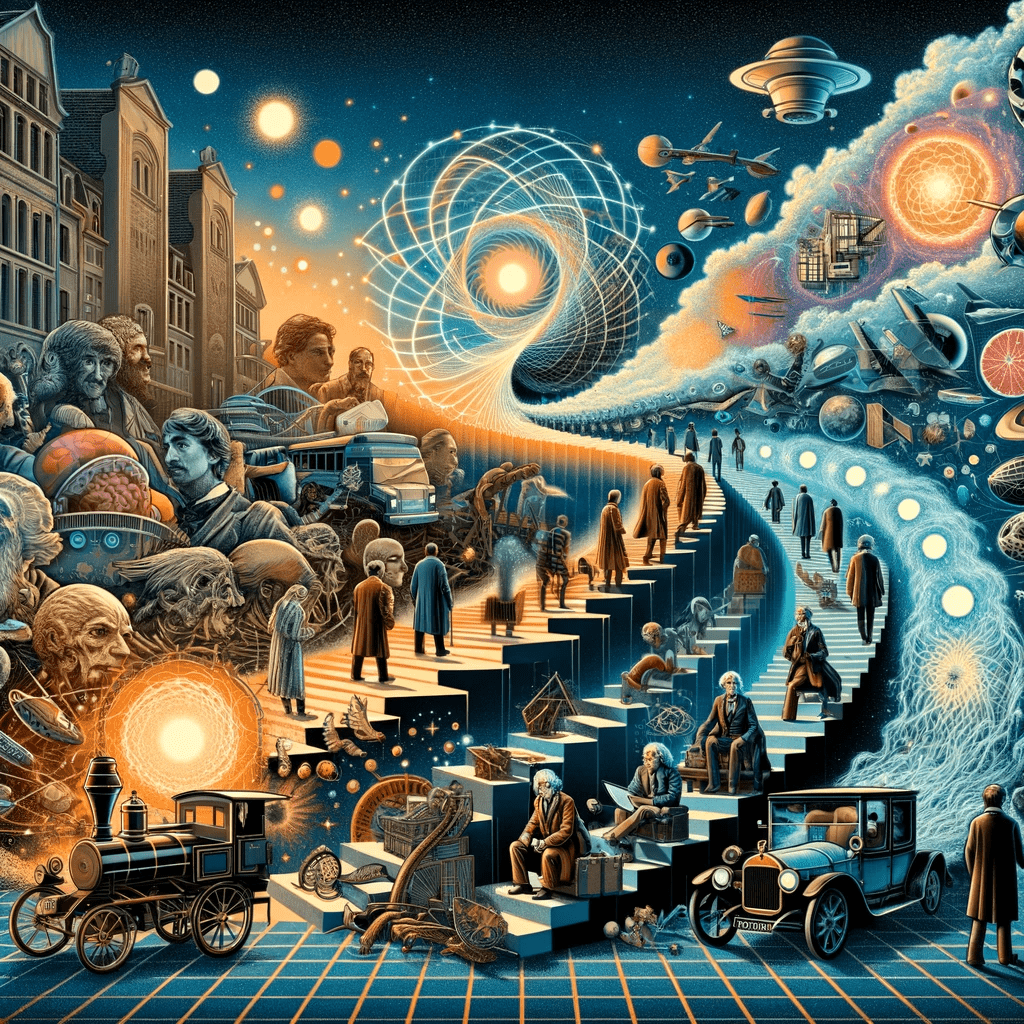Thomas Kuhn

Thomas Samuel Kuhn (1922-1996) was an American philosopher and historian of science whose work significantly influenced the philosophy of science and scientific methodology. Kuhn’s theories, particularly those put forth in his most famous book, “The Structure of Scientific Revolutions”, have had an enduring impact on how we understand scientific progress and paradigm shifts.
Kuhn was born in Cincinnati, Ohio, and completed his undergraduate degree in physics at Harvard University in 1943. After serving in the Office of Scientific Research and Development during World War II, he returned to Harvard for his doctoral studies, obtaining his Ph.D. in physics in 1949. His dissertation was on quantum mechanics, a highly theoretical area of physics, which reflects his early inclination towards the philosophy of science.
Kuhn worked as a postdoctoral fellow and then as a Junior Fellow in the Society of Fellows at Harvard. He transitioned to the field of the history of science under the influence of eminent Harvard historian of science, James Bryant Conant. In 1956, Kuhn moved to the University of California, Berkeley, where he was first a professor of the history of science, and later of philosophy. He subsequently held positions at Princeton University and the Massachusetts Institute of Technology.
His ideas about scientific paradigms and paradigm shifts can be applied to the study of UAP or UFO. This application lies in the idea that the recognition of anomalies (observations that do not fit within the current scientific paradigm) can be difficult, and their acceptance can lead to a paradigm shift. Anomalies like unexplainable aerial phenomena could potentially instigate such shifts, provided they are widely recognized and accepted by the scientific community.
In his lifetime, Kuhn wrote several influential works. The most famous is “The Structure of Scientific Revolutions” (1962), where he introduced the concept of ‘paradigm shifts’. Another notable work is “The Copernican Revolution” (1957), which applies his theories to the shift from a geocentric to a heliocentric worldview. He also authored “Black-Body Theory and the Quantum Discontinuity, 1894–1912” (1978) and “The Road since Structure” (2000, published posthumously).
- Kuhn’s “The Structure of Scientific Revolutions” is one of the most cited academic books of all time. According to the citation indexing service Google Scholar, it has been cited over 100,000 times.
- Kuhn coined the term “paradigm shift”, which has since entered the popular lexicon and is frequently used outside the context of the history and philosophy of science.
- While known for his work in the philosophy of science, Kuhn initially trained as a physicist and wrote a dissertation on quantum mechanics.
Despite Kuhn’s lack of direct engagement with the study of UAPs or UFOs, his theories have relevance in the way these phenomena are approached. For instance, a sighting that challenges the current scientific understanding might be dismissed as an anomaly within the existing scientific paradigm. However, if such sightings become too numerous or too difficult to dismiss, they could potentially trigger what Kuhn would describe as a paradigm shift—a complete change in the scientific community’s understanding and approach.
Kuhn’s work provides a useful framework for considering how scientific understanding evolves and how new and challenging information can lead to significant shifts in this understanding. This perspective encourages a more open-minded approach to seemingly inexplicable phenomena and a readiness to question established assumptions.
Dr. Jacques Vallée, a venture capitalist, computer scientist, author, ufologist, and former astronomer, echoes Kuhn’s theories in his approach to the study of UFOs. Vallée advocates for a scientific investigation of UFOs and has often been confronted with the difficulty of integrating such anomalies within the existing scientific paradigm.
Thomas Kuhn’s contributions to the philosophy and history of science were significant and continue to shape discussions in these fields and beyond. His theories provide a useful framework for understanding how such phenomena might impact our understanding of the world and instigate shifts in the scientific paradigm.


